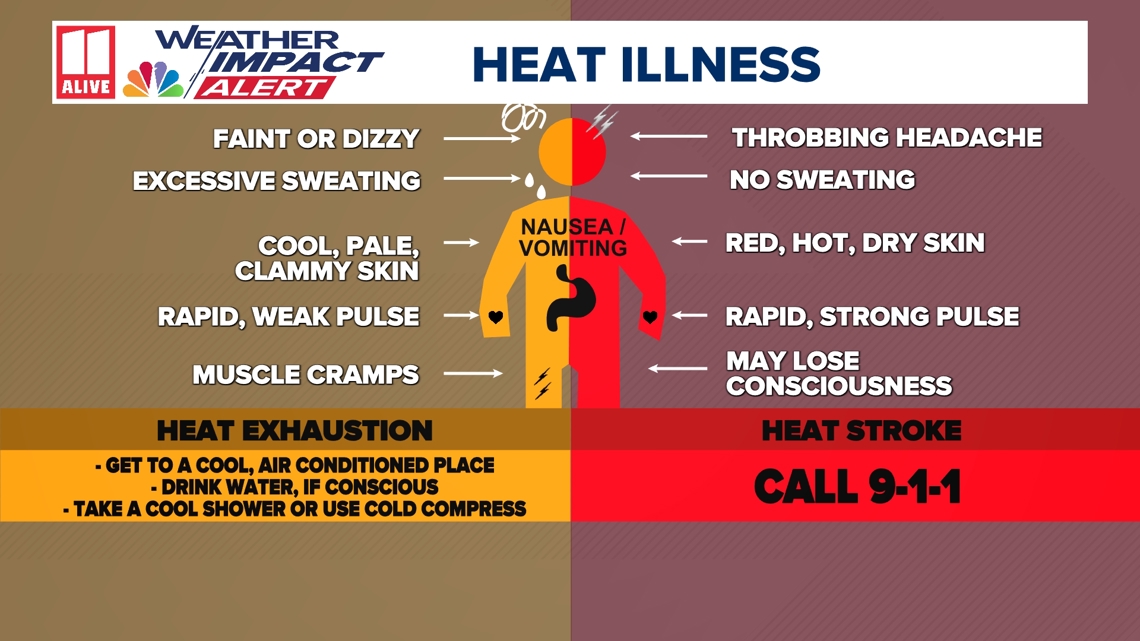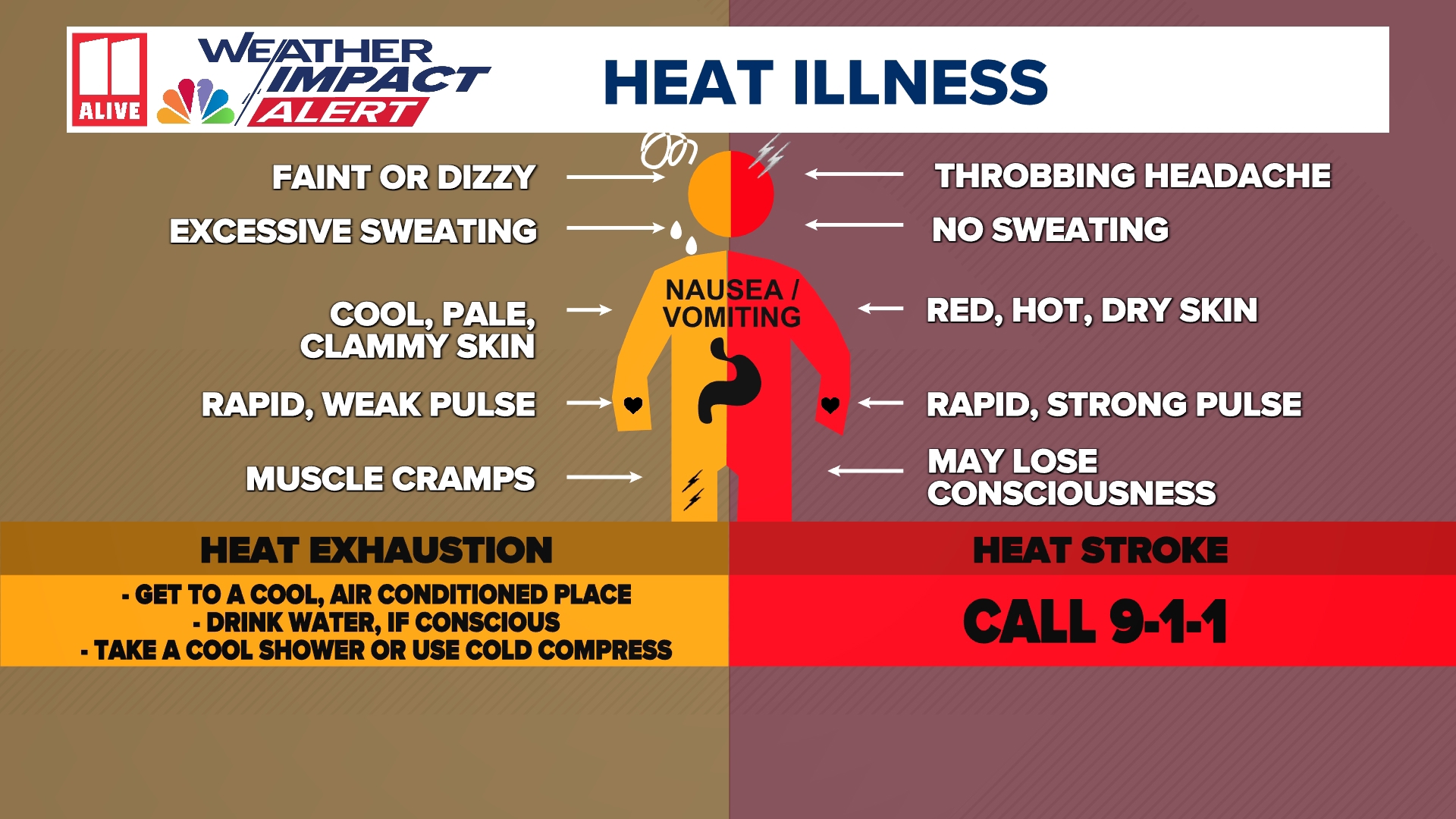ATLANTA — We're used to the summertime heat here in north Georgia, but as temperatures rise, it's important to be able to recognize the signs of heat illness.
Two terms that you're likely to hear amid scorching temperatures are "heat stroke" and "heat exhaustion". They're the same thing, right? Wrong.
Both are heat-related illnesses that can be fatal if left untreated. Heat exhaustion can lead to heat stroke, which is a life-threatening illness that requires immediate medical attention.
As heat exhaustion sets in, you may feel faint or dizzy. Excessive sweating, a rapid, weak pulse, and muscle cramps are possible. Skin will be cool, clammy, and pale.
When heat exhaustion transitions into heat stroke, a throbbing headache sets in. There is no sweating, and skin becomes hot, red, and dry. Pulse becomes strong, and you may lose consciousness.


If you're exhibiting signs of heat illness, it's important to do whatever you can to cool your body down. Recommendations include:
- Get to a cool air-conditioned place
- Drink water, if conscious
- Take a cool shower or use cold compress
Once symptoms of heat stroke begin, call 911 immediately. Heat stroke requires immediate medical attention.
News happens fast. Stream it faster with our re-designed 11Alive+ app.
Watch newscasts, breaking news streams and get the latest sports, weather and VERIFY content -- 24 hours a day, 7 days a week. Available on Roku, Apple TV and Amazon Fire TV. Text "plus" to 404-885-7600 to download 11Alive+ and stream now.

